.jpg)
Porsche Cayenne E-Hybrid Review
.jpg)
Introduction
Motoring journalists take a fair bit of stick for their love of Porsches – mainly from people who either can’t afford a Porsche or decided to lease something else instead. But it’s hard not to rave about a car company that’s seemingly incapable of building a bad car. Every single time Porsche sets its sights on building a new kind of car, it nails it.
The SUVs are a case in point. Everyone in the car industry wanted to hate the Cayenne when it came out, but it was brilliant. The same was true of the Macan, which is arguably the best car you can lease right now. Unfortunately, the diesels were the pick of the engine range, and those powertrains have been consigned to the history books.
So with diesel versions dead in the water, Porsche needed some more frugal options to counter the gas-guzzling petrol engines. Plug-in hybrids were the answer, so Porsche brought out the E-Hybrid models, marked out by their lime green brake callipers and matching accents on the badges. But whatever you think of the lurid trim, the technological might on show is exceptional.
Review Sections
Select's rating score* - 4 / 5
At a Glance
As a plug-in hybrid, the Cayenne lacks range and the emissions are a little higher than some. But in every other aspect, it’s more or less faultless. The way it drives on a back road beggars belief, yet it’s still comfortable and quiet and, when you’re on a short journey, it’s even eco-friendly.
But although the sports car DNA is ever present – you get the feeling the hybrid system is just a performance-enhancing tax dodge – it’s still a well built luxury 4x4. The ungainly looks of the old Cayennes have gone, but the talents remain, including the fastidious attention to detail and the exquisite quality.

Hybrid customers get the choice of the ‘basic’ 462hp E-Hybrid with its V6 engine or the Turbo S E-Hybrid with its massive 680hp V8. Both come with pretty much everything you would ever need, although the Turbo S E-Hybrid is slightly more generous with its gizmos. If you feel the need for more, however, there’s an extensive options list.
Key Features
Aside from the tax advantages of the hybrid powertrain, the Cayenne is filled with clever touches. The configurable instrument display, for example, is a gimmick a lot of the time, but every now and then it’ll come in really useful – particularly if your passenger is fiddling with the touchscreen when you need the sat nav instructions for a tricky junction.
The touchscreen is great, too, despite its occasional penchant for a fiddly menu or a tiny virtual ‘button’ that LS Lowry figures would struggle to operate. That aside, the display is clean and modern, and the satellite image overlay for the navigation system is a really cool little feature. The hybrid system controls are great, too, giving you more power to choose how the car operates.
Best of all is the drive selector on the steering wheel, which allows you to quickly switch into the sportier driving modes when you hit a good back road. It also comes with a tiny, unassuming button that instantly spools everything up, giving you full use of the power on offer. Someone at Porsche once described it to us as a motorsport-style “push-to-pass” button, which gives it a bit of added cool in our eyes.
Performance & Drive
The Cayenne E-Hybrid might wear badges that hint at eco-friendliness and tree hugging, but the most important logo on the whole vehicle is the Porsche crest on the bonnet. A 4x4 it may be, but the Cayenne still has to walk in the footsteps of so many glorious sports cars that have gone before.
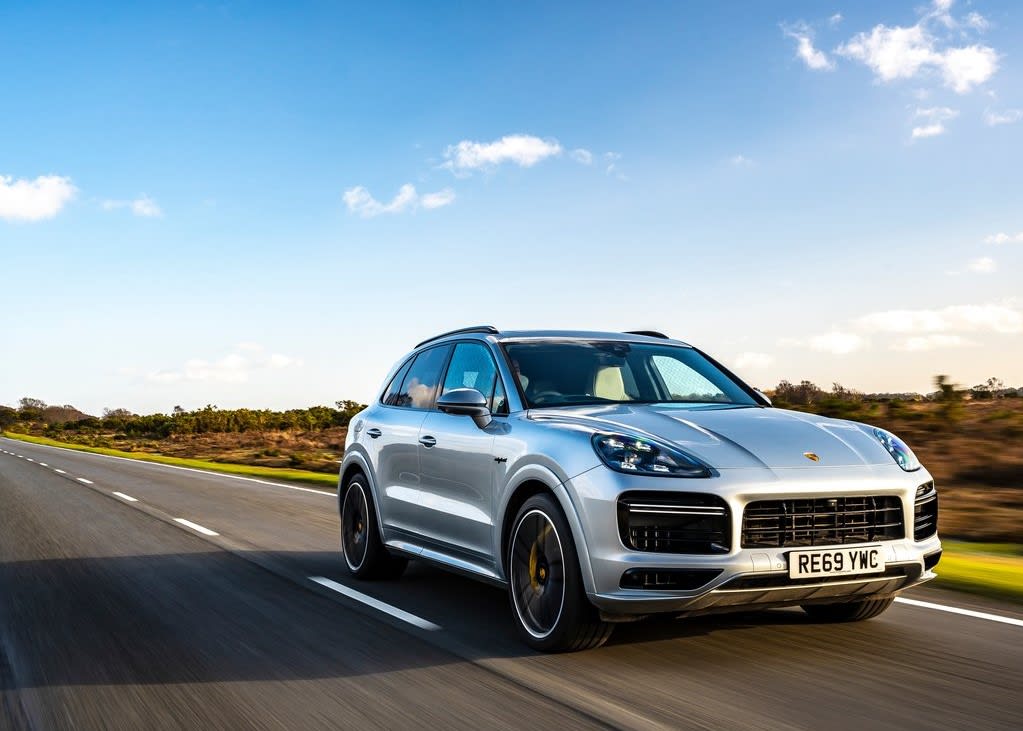
To help with that, it has enlisted the same 3.0-litre V6 you’ll find in an entry-level petrol-engined Cayenne. With 340hp it’s sufficiently powerful, but it lacks the bite you’ll get from the bigger and more expensive motors. The E-Hybrid combats this, however, with a 136hp electric motor, which not only allows you to drive in silent electric mode, but also gives the petrol engine a helping hand when you put your foot down.
Due to physics and engineering, you can’t quite utilise the full might of both propulsion systems at once, so you get 462hp, rather than the 476 you might have been expecting. Nevertheless, it’s enough to get you from 0-62mph in five seconds flat, and you’ll be doing 157mph flat out. That’s quick enough to put most hot hatchbacks in their place.
If that’s not enough, you can upgrade to the Turbo S E-Hybrid with its 4.0-litre V8 petrol engine and 680hp. Go for that and you’ll get from 0-62mph in just 3.8 seconds before hitting a top speed of 183mph. To be honest, though, that’s a bit unnecessary. The standard E-Hybrid is more than quick enough.
And by God it handles well. For all its straight-line speed, the most impressive thing about the Cayenne (in any guise, whether hybrid or not) is its ability to go around corners. To be honest, there’s nothing clever about getting an SUV to go fast on a drag strip. You simply cram as much power into the engine as possible and you’re away, but cornering is a much more difficult task. The inevitable weight, height and centre-of-gravity disadvantages that will always plague SUVs make their presence felt and all pretence of sportiness is lost.
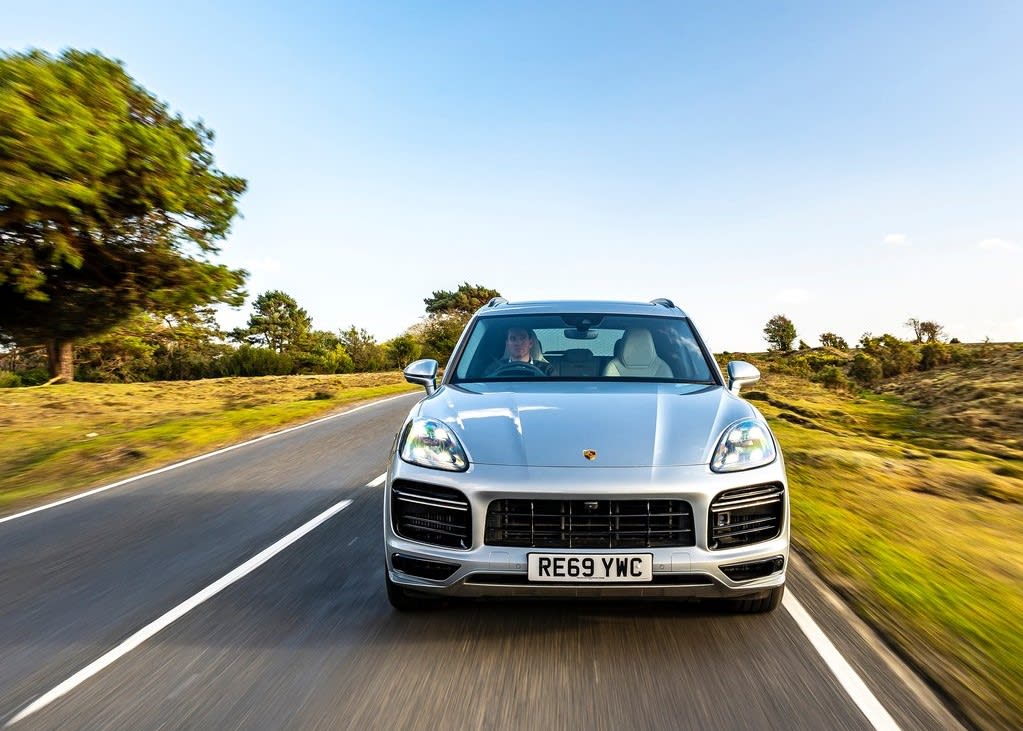
Unless, of course, you’re talking about a Porsche. Yes, it’s a big, big car and it does inevitably roll slightly when you push it, but it’s little worse than most family hatchbacks. And there’s just so much grip. It’s like a four-wheel-drive limpet. Add in Porsche’s brilliant steering feel and you’ve got something that’s really special on a B-road. This is a massive off-roader that really can put hot hatches to the sword.
It has all the advantages of a big 4x4, too. It’s no Land Rover, but it’s as capable as you really need a car to be; snow drifts and muddy farm tracks won’t be a problem as long as you’ve fitted decent tyres. It’s even quite comfortable, and you can enjoy the extra visibility you get from perching above the normal people in their Golfs. Visibility is good considering the size, but you do have to be a bit careful on narrow roads: this is quite a wide piece of kit.
The E-Hybrid is also quite refined, with electric power keeping things hushed around town and a smooth V6 petrol engine that only gets noisy when you push it hard. Even when the engine does make its presence felt, it’s an appealing, throaty noise that feels sporty yet somehow still sophisticated and genteel.
But the whole character of the car can be altered using the standard-fit Sport Chrono Package, which includes a little driving mode selector on the steering wheel. In electric mode, the car will waft along on battery power for as long as possible, while hybrid mode gives you the choice of using the battery and petrol engine together in the most efficient way possible, or using the petrol engine to charge the batteries. Alternatively, you can simply hold the battery level, giving you enough electricity to use when you near your destination.
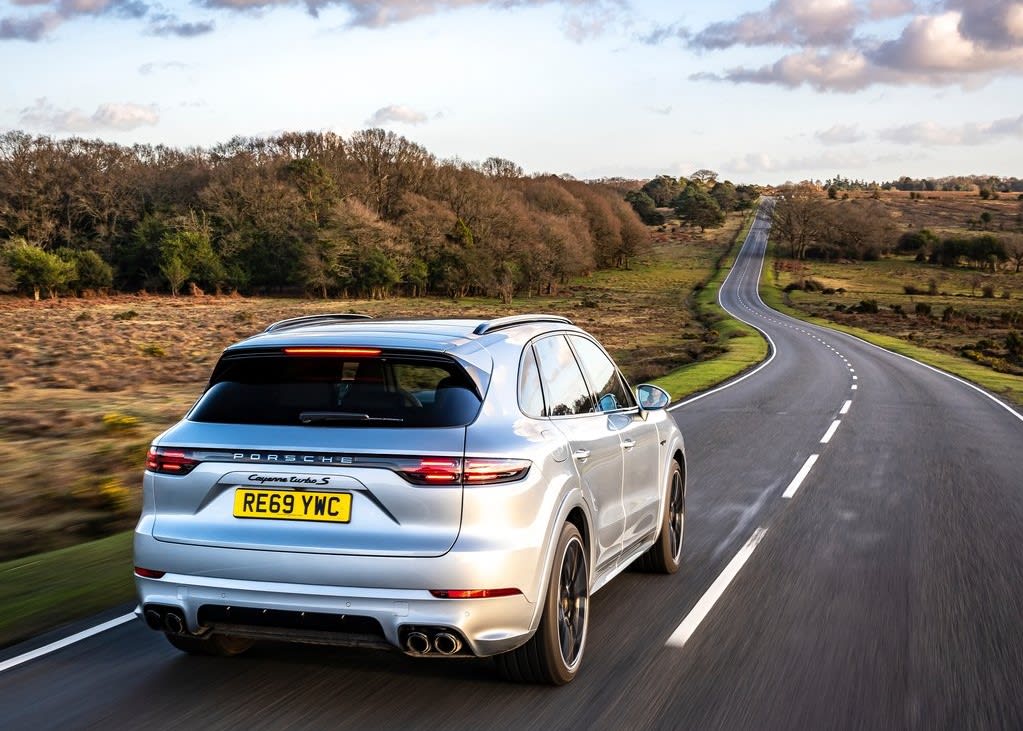
Most impressive, though, are the Sport and Sport+ modes, which use electricity and petrol to simply make the car as fast as possible. That unlocks pretty much all the car’s potential, but if you just want a bit of extra boost to overtake a slow-moving lorry, there’s always the subtle button in the middle of the drive mode selector. That spools everything up to 11 for a few moments, giving you maximum power.
Running costs
In theory, you can make the Cayenne’s hybrid system work really efficiently, but it’s harder to manage on the road. On paper, the car will manage around 25 miles on a full battery, although that’s probably nearer 20 if you have the air conditioning and a few other gizmos on in the background. Either way, it’s enough for trips to the shops, the school run and maybe even commuting.
If – and it’s a big if – you can just potter around town on electric mode, then charge the batteries overnight before doing it all again tomorrow, the Cayenne will suit you quite well. You need hardly use the petrol engine until you do the occasional longer trip to visit a client or perhaps the in-laws. As a result, the official economy test suggests you can get around 90mpg from one of these cars. If you’re the target market, that might be true, but we reckon something closer to 35mpg is probably more realistic for most Cayenne E-Hybrid customers.
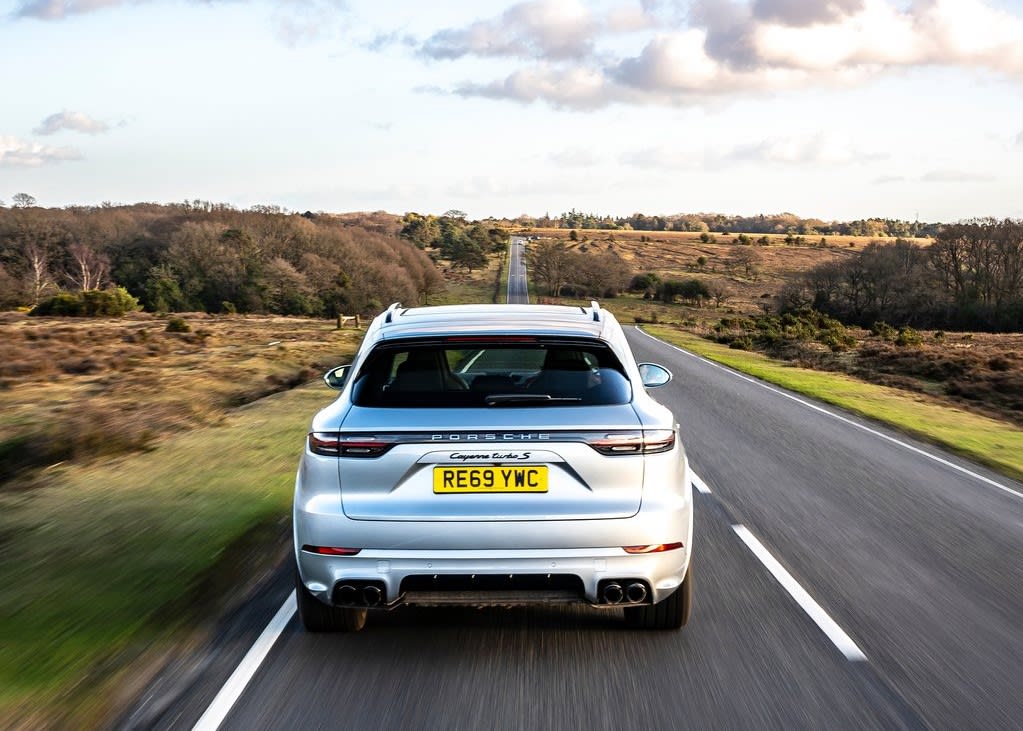
Emissions
If we’re honest, though, the Cayenne E-Hybrid does not really exist to satisfy those seeking maximum economy on long drives to the Highlands. That’s what diesel power is for. Instead, this is a car for the company director who wants to save a bit of Benefit-in-Kind tax on their company car.
Fortunately, that’s a job the E-Hybrid does admirably, thanks to its carbon dioxide emissions of between 71 and 83 grams per kilometre. That means the Cayenne incurs BiK tax at a rate of less than 20% in the 2021/22 financial year. In contrast, a standard Cayenne will fall into the top-end 37% bracket.
Interior
No matter what you drive or how good you think it is, you haven’t seen build quality until you step inside a modern Porsche. The fit and finish in there is absolutely incredible, with the traditional German attention to detail on full display. Everything fits together perfectly and feels as solid as the mountains of the Black Forest.
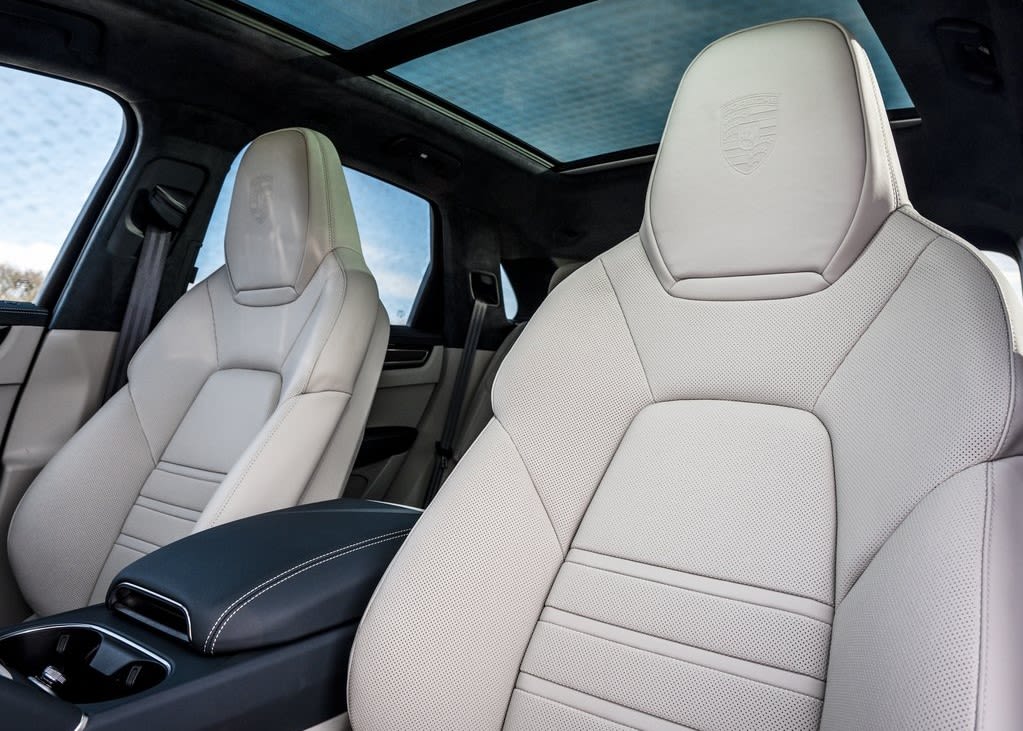
To be honest, it isn’t the prettiest car interior you’ll ever see – Mercedes-Benz has arguably done the better job when it comes to styling – but the Cayenne’s cabin still exudes quality. There’s a pleasant minimalism to it that makes you feel like the centre of attention, and all the dials look chunky and sturdy, yet still modern.
Technology
Although there’s plenty of technology hiding under the Cayenne E-Hybrid’s skin, there’s also a wealth of tech in the cabin. Top of the list is the 12.3-inch touchscreen that sits slap bang in the middle of the dash. Pretty much everything can be found there, including some of the controls for the hybrid system. Normally, we wouldn’t be too keen on such nonsense, but the Porsche makes the best of it because the system actually works. Sure, one or two of the menus are a bit fiddly, but the screen is generally responsive and intuitive. You can also personalise the home screen to make it easier to navigate.
That screen is joined by some smaller displays in the instrument binnacle, which can also be adjusted to suit your tastes. Of course, most of the displays are fairly pointless, but the mini navigation screen and the hybrid system information screens might both come in handy.
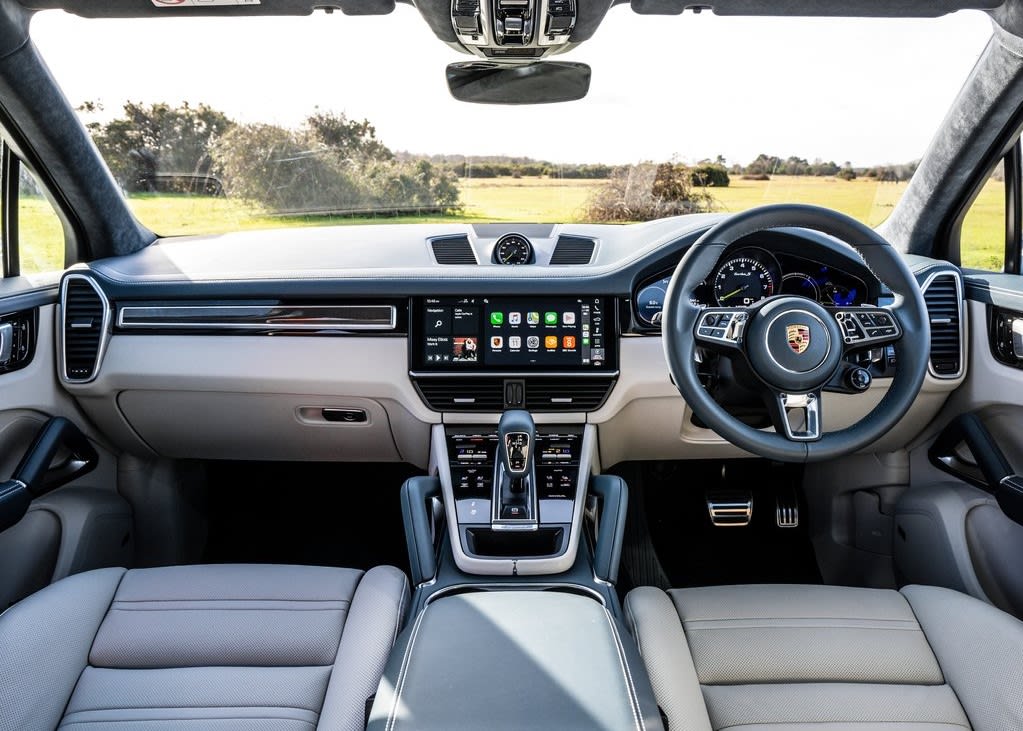
And there’s more to the Cayenne than just screens. Porsche will also flog you a range of sound systems, as well as wireless phone charging and rear-seat entertainment. We wouldn’t recommend the rear-seat entertainment unless you’re regularly carrying three or four people on long journeys, but the wireless charging and Bose sound system offer decent value.
Practicality & Boot Space
On paper, the Cayenne’s practicality depends largely on whether you choose the standard SUV or the Coupe body shape. For those in front, there’s little obvious difference, with the same generous amount of head- and shoulder-room, but those in the back might notice the slight drop in headroom afforded by the Coupe.
Nevertheless, both are roomy SUVs. They might not be quite as big as the largest models out there, but even six-foot adults will find both body shapes perfectly commodious in the front and rear. You also get plenty of storage in the doors, glove box and centre console, which means you won’t have to sit surrounded by clutter.
Then there’s the boot. In the standard SUV, you get a massive 770 litres of luggage space, but the E-Hybrid cuts that to 645 litres thanks to its bulkier powertrain. It’s a similar story in the Coupe, which shrinks from 625 litres to 500 litres when you opt for the hybrid. Even so, those numbers are all quite large, and every version of the Cayenne comes with a very useful boot aperture that means you won’t have any problem fitting the usual holiday luggage inside.
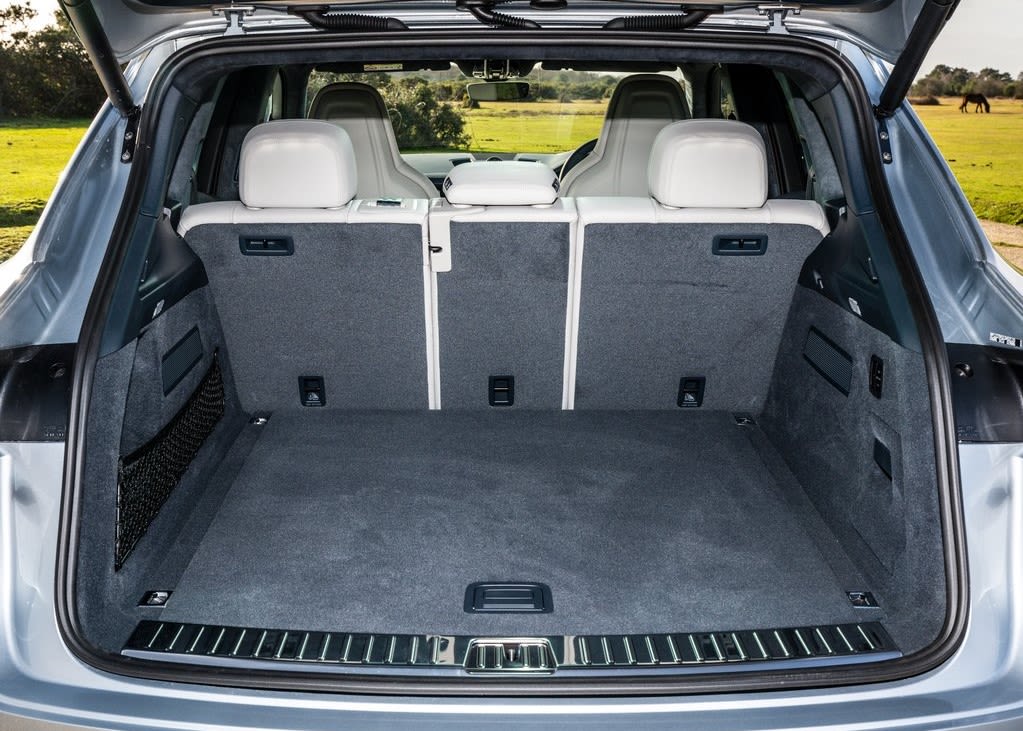
Safety
The Cayenne’s party piece may well be its sporting prowess, but it’s also a very safe car to drive. In the official Euro NCAP crash test, the Porsche received a five-star rating backed up by an incredible 95% score for adult occupant protection. A solid 80% score for child occupant protection should also give you some peace of mind if you’re carrying your family around.
But the Cayenne also comes with a massive number of gadgets designed to prevent accidents happening. There’s an automatic emergency braking function that’s primarily designed to stop you rear-ending other cars in traffic, but it will also hit the brakes automatically if you fail to spot a pedestrian who has stepped out into the road.
If you want more reassurance, the car is also available with options including blind-spot monitoring to alert you when a vehicle is hiding in the hard-to-see areas over your shoulders and lane assistance that helps to prevent the car wandering out of its lane. Adaptive cruise control is also an option, allowing the car to maintain a safe distance to the vehicle in front.
Options
When you lease a Cayenne E-Hybrid, the trim level decisions are more or less made for you. The car is its own stopping-off point in the luxury 4x4 range, featuring 19-inch alloy wheels, automatic LED headlights and automatic windscreen wipers. Inside, you get keyless ignition, part-leather upholstery and climate control, but the whole thing is dominated by the 12.3-inch touchscreen navigation system with the Android Auto and Apple CarPlay smartphone integration tech.
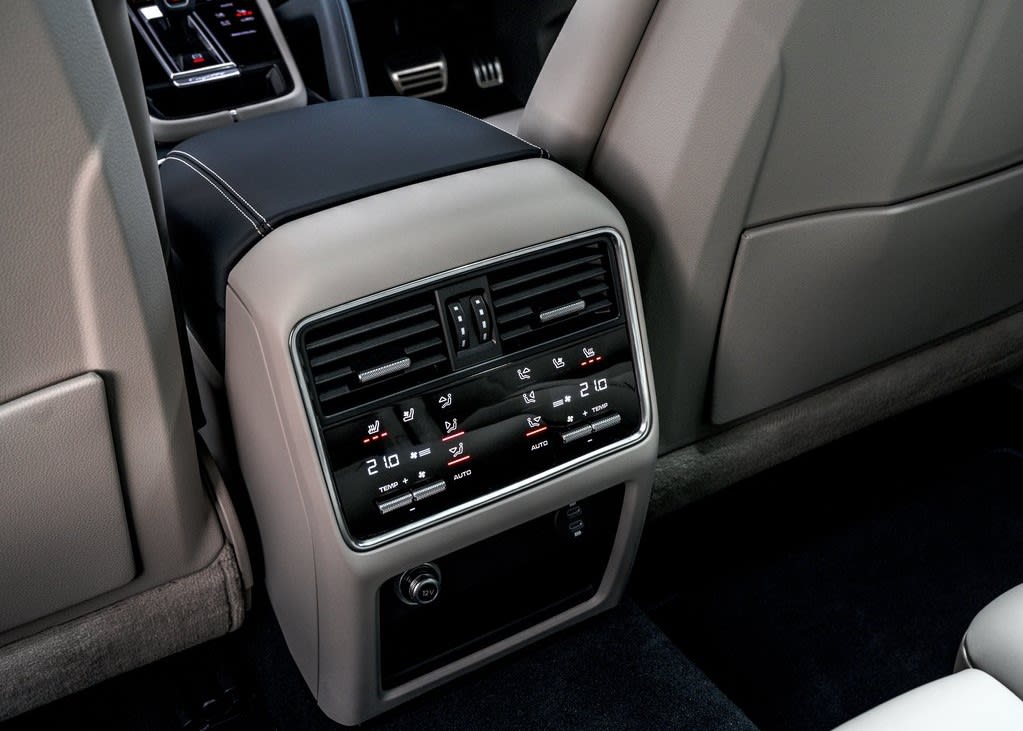
Other standard-fit features include a 10-speaker sound system, heated front seats and the instrument cluster with its integrated and configurable digital displays. Parking sensors, a reversing camera and a power-operated tailgate are also thrown in as standard.
In short, the car comes with everything you really need right off the bat, but you can go a tad more upmarket if you so choose. The Turbo S E-Hybrid comes with sportier exterior design features, 21-inch alloy wheels and full leather upholstery, as well as heated rear seats and a heated steering wheel. The whole thing is capped off by the 14-speaker, 710-watt Bose sound system.
Whichever car you go for, you’ll probably be looking to the options list for a little more flesh on the bones. Not only can you specify a range of different colours, alloy wheels and interior trims, but you can also have rear-axle steering for extra manoeuvrability, ceramic brakes for extra stopping power or air suspension for even better ride comfort. And that’s just one section of the options list.
Upgraded sound systems are on there, along with rear-seat screens to keep those in the back entertained on long drives. You can have a head-up display, too, or a 360-degree parking camera that gives you a bird’s-eye view of the car and its surroundings. You can even get a night vision camera to help with visibility on dark nights.
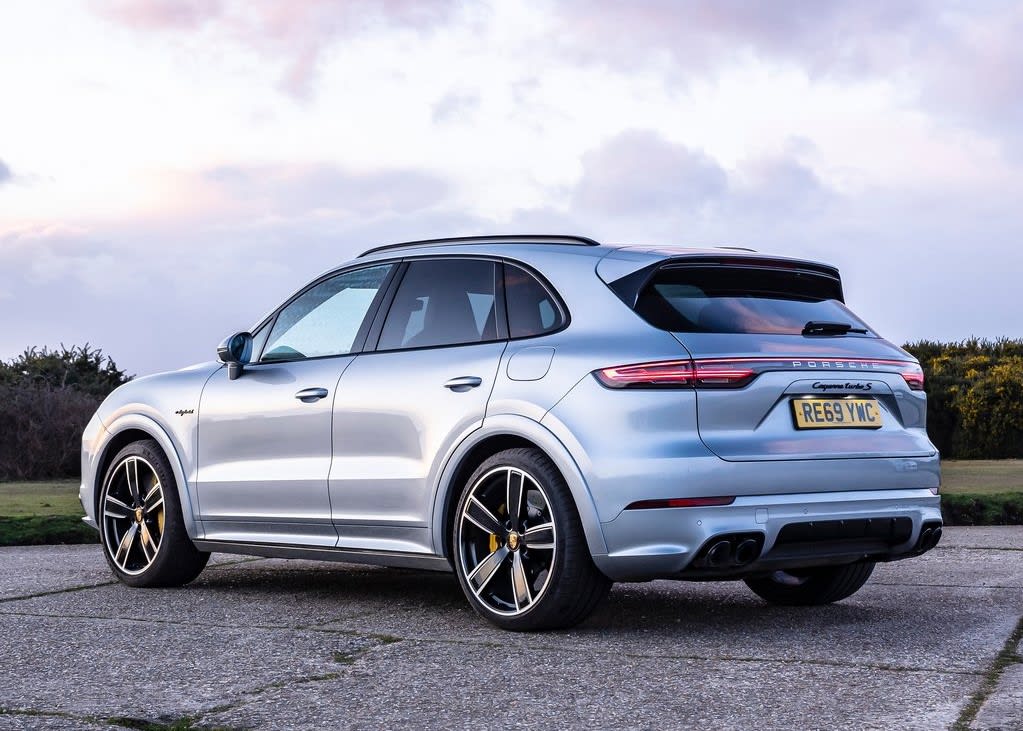
Rival Cars
The Cayenne is up against some pretty tasty competitors, including the Audi Q7, Mercedes-Benz GLE and BMW X5, all of which are excellent cars in their own right. The Q7 is beautifully built, the GLE is wilfully stylish despite its size and the X5 defies physics to be a magnificent driver’s car (albeit not quite as good as the Cayenne). The big BMW also has a glorious 45e plug-in hybrid variant with a luscious 3.0-litre straight-six engine.
Then you’ve got the likes of the Bentley Bentayga Hybrid, which is slightly less potent than the Cayenne but oh so luxurious. It’s basically one of those Cotswold mansions on wheels, what with all the quilted leather and wood veneer. It’s a lovely thing, but it doesn’t come cheap.
So perhaps the most desirable realistic competitor is the Range Rover Sport, which is also offered in plug-in hybrid guise. Unlike the Cayenne, the engine is just a 2.0-litre four-cylinder motor, which leaves the Range Rover feeling a little stretched when you put your foot down, but it’s still a stylish and spacious car. It’s particularly good off-road, too.
And if you want something a little bit different, consider the Volvo XC90 Recharge T8. It’s nowhere near as good to drive as the Porsche, but it wraps you in cool Scandi luxury and it’s a very pleasant thing in which to while away the miles. As with the hybrid Range Rover, though, the 2.0-litre engine feels a little breathless when you want performance.
Verdict & Next Steps
If you want your big SUV to behave like a sports car from time to time, the Cayenne has always been the car for you. Those who ran one of the old diesels or a thirsty petrol version will be delighted to hear the E-Hybrid version does nothing to dampen the Cayenne’s credentials, but it’s worth bearing in mind that powertrain is only truly efficient in certain circumstances.
If you’re looking at the Porsche because you want a hybrid, there are probably better options elsewhere. However, if you’re looking at the E-Hybrid because you want a great driver’s SUV with slightly lower company car tax bills, this is absolutely brilliant.
Where to next?
View latest Porsche Cayenne E-Hybrid leasing deals - guide price from £776.39 per month inc VAT**
Looking for a great deal? Check out our incredible range of car lease deals
New hybrid SUV? Read our latest Reviews and find the right model for you
Want to know more about leasing? Take a look at our comprehensive Leasing Guides
Interested in everything motoring? Why not catch up on all the latest Car Leasing News.
*Score based on Select’s unique meta score analysis, taking into account the UK’s top five leading independent car website reviews of the Porsche Cayenne E-Hybrid
**Correct as of 22/05/2021. Based on 9 months initial payment, 5,000 miles over a 48 month lease. Initial payment equivalent to 9 monthly payments or £6987.49 Ts and Cs apply. Credit is subject to status.



















